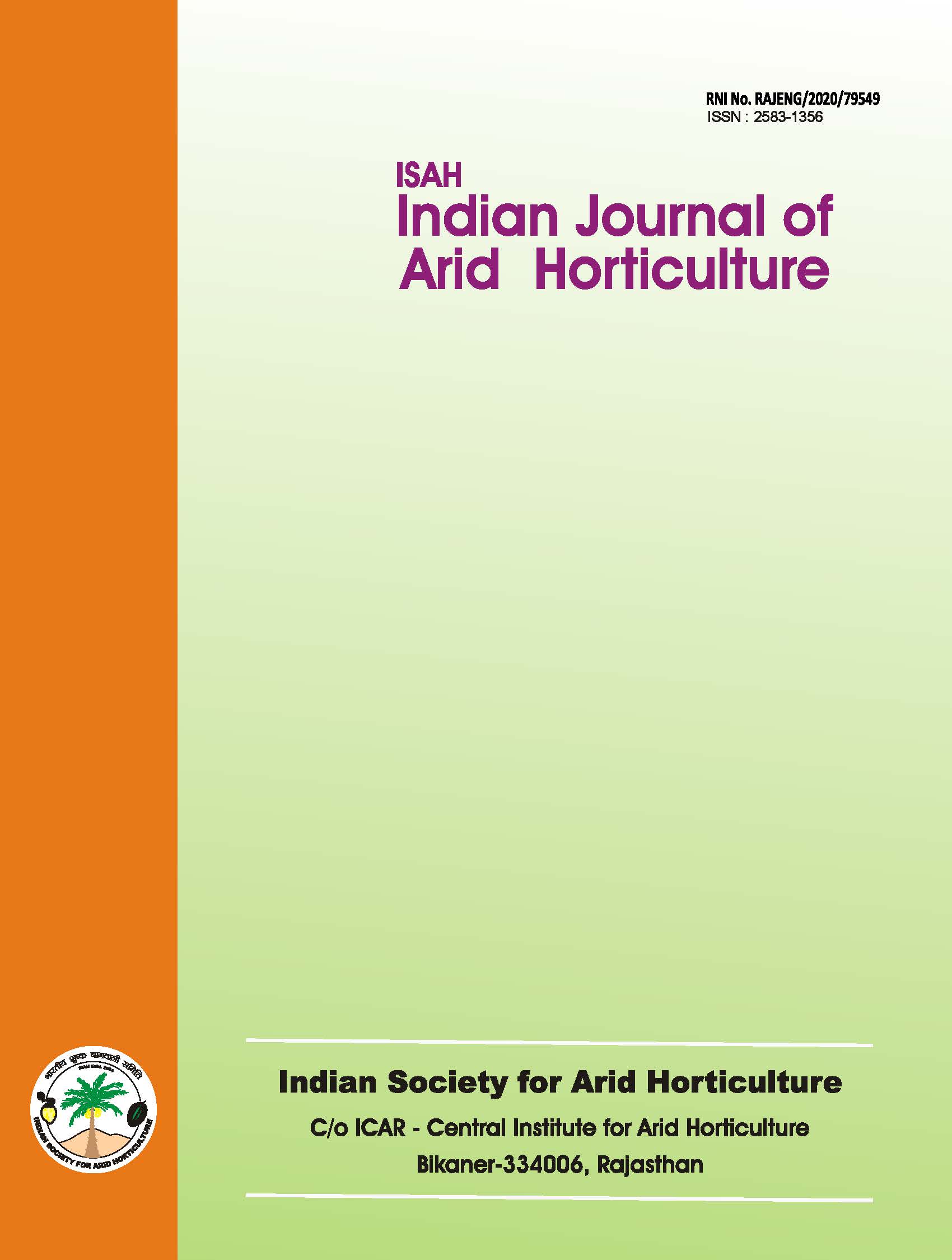Variability in pomegranate fruit spot pathogen
Keywords:
Pomegranate, biochemical, diseaseAbstract
Pomegranate (Punica granatum L) is the most important fruit crop of the tropical and subtropical regions. It is also grown in arid and semi-arid regions of India in a total area of 79,157 ha with a production of 5,09,480 million tonnes. Fruit and leaf spots are important diseases affecting the yield and quality of fruits. Fruit spot caused by A. alternata (Fr.) Keissler occurs in pre-harvest and post harvest stages of pomegranate in some areas particularly in western parts of the country. Our surveys in western Rajasthan also revealed that it was major constraints resulting in uprooting of the pomegranate plants of local variety i.e. Jalore seedless in the Jalore District of Rajasthan. Survey revealed that mostly the plants of more than 10-15 years old have been adversely affected and the fruits are not fetching remunerative price even in domestic markets. The test pathogen has also been also reported to cause leaf spots and blights on susceptible cultivars. It is well known that A. alternata has different isolates or strains as reported from different crop plants. In pomegranate also, diversified symptoms on different cultivars could be seen. Successful management of this disease depends on the identification of virulent isolates or strains and for that characterization of basic features of pathogen is essentially required. Among different parameters, proteins and amino acid compositions are important biochemical components, which are useful for the chemotaxonomic characterizations of pathogenic isolates. Perhaps, due to genetic factors of the hosts or the diversity among pathogenic populations itself, different characteristic symptoms may be expressed in host plants and therefore, it is imperative to study the basic aspects of the pathogens for the better management of the disease.Downloads
References
Babitskaya, V. R., Kostsina, A. M., and Shcherba, V. V. (1989). Study of the composition of protein fractions of fungal origin. Vestsi-Akademii-Belaruskai-SSR, Biyalagichnykh-Navuk, No. 3: 36-39.
Lal, B. B., Ram, R. P., Shahdeo, S. P., and Prasad, M. (1976). Variation in amino acids in the growing culture of Alternaria alternata (Fr.) Keissler. Current Science, 45(4): 150-152.
Portnoy, J., Pacheco, F., Barnes, C., Upadrashta, B., Crenshaw, R., and Esch, R. (1993). Selection of representative Alternaria strain groups on the basis of morphology, enzyme profile, and allergen content. Journal of Allergens and Clinical Immunology, 91(3): 773-782.
Prasad, P., and Reddy, M. N. (1987). Estimation of amino acids, phenols, sugars, and nitrogen from the mycelium of Alternaria alternata. Indian Phytopathology, 40(3): 416-418.
Roberts, R. G., Reymond, S. T., and Andersen, B. (2000). RAPD fragment pattern analysis and morphological segregation of small spored Alternaria species and species groups. Mycological Research, 104(2): 151-160.
Vijaya Kumar, C. S. K., and Rao, A. S. (1976). Amino acids, organic acids, and sugars present in mycelium of Alternaria triticina and A. tenuis. Transactions of the British Mycological Society, 67(3): 498-499.
Vijaya Kumar, C. S. K., and Rao, A. S. (1977). Amino acids in the mycelium and culture filtrate of Alternaria solani. Transactions of the British Mycological Society, 69(1): 153-154.
Vishwanath, and Kolte, S. J. (1997). Biochemical variation among three isolates of Alternaria brassicae. Indian Phytopathology, 50(3): 437-438.

